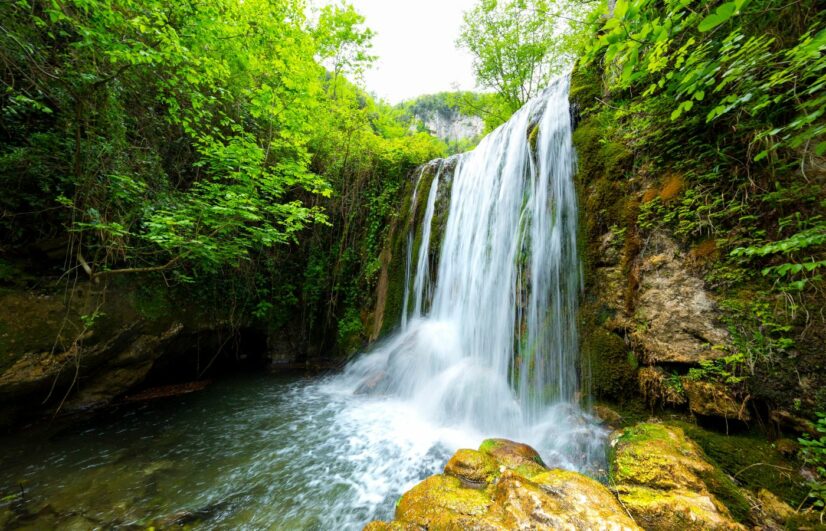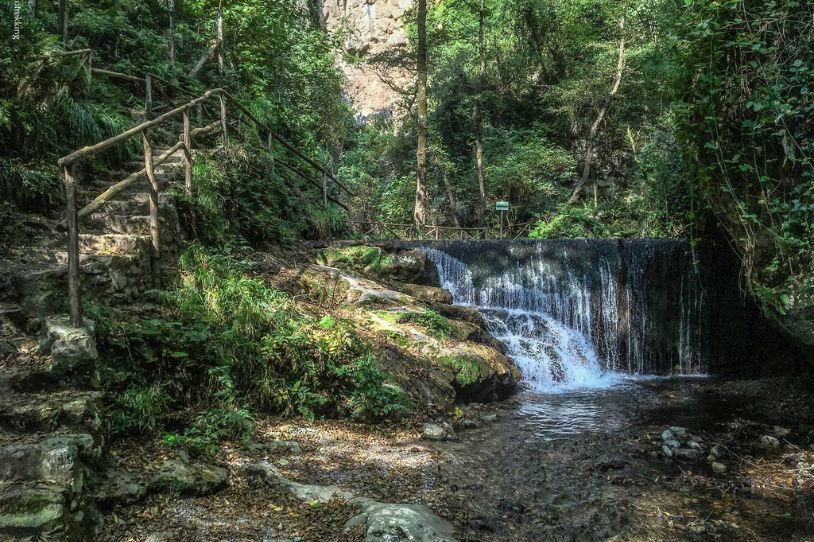When one speaks of Amalfi one immediately thinks of the sea, the Duomo and other beautiful sights: few, however, know of the Valle delle Ferriere nature reserve.
The path inside the reserve leads from the mountains Monti Lattari towards Amalfi, passing through woods and streams. The name “Ferriere” derives from the ruins of medieval ironworks that can be found along the route.
The last part of the route features water-powered mills, used for the production of the famous Amalfi paper.
Indice dei contenuti
Valle delle Ferriere between past and present
The valley has a special position, between the Scala mountains, which protects it from cold winds while it is open to the warm-humid southern currents, thus subject to abundant rainfall over three months.
This has made it possible to preserve its microclimate intact, thus preserving plant species from times long past. In particular, a rare plant can be found here: the Woodwardia radicans, an example of a plant from the pre-glacial period.
The place is also populated by various animal species, in particular the so-called Spectacled Salamander. Along the route one encounters the ancient ironworks that supplied the Maritime Republic of Amalfi with iron and which gives the valley its name.
The route to the Ferriere Valley
The route through the Ferriere Valley is simple and takes about three hours. A walk in the nature of the Amalfi coast.
The starting point is the village of Pontone, a hamlet of Scala at 225 metres above sea level.
Pontone can be reached by the local bus line connecting Amalfi, Ravello and Scala. If you feel like walking, it is easy to get there from Ravello via narrow streets and paths.
If you are looking for more information on getting around the Amalfi Coast, we recommend downloading our free guide “How to get around the Amalfi Coast”, which contains all the information you need to reach the Amalfi Coast and move between the various villages, as well as useful information on parking on the Amalfi Coast!
From Pontone, starting from the piazza, take the muletrack following the main path and leaving the steep stairs to the right.
Beyond an arch, you will find yourself in front of an ancient nativity scene set in a farmhouse. The furniture and furnishings have been specifically made and the inhabitants are scarecrows.
From here there is a flight of steps leading directly to Amalfi and a path leading into the valley, among lemon groves and vineyards. Beyond a small climb is an aqueduct and after this you will reach the first ironworks and the Torrente Canneto. The path then descends to Amalfi.
The route is not strenuous and runs through woods, streams and waterfalls as well as the rapids of the Rio Canneto. This was once used as the driving force for the mills of the ancient paper mills, where the famous Amalfi paper was made.
Today the paper is still in great demand and some specimens can be seen at the Amalfi Paper Museum. In the valley you can still visit the ruins of the old paper mills dating back to the 12th century.
The alternative path for true enthusiasts

For all those who love trekking and are adventurous, it is possible to take a small diversions off the trail before returning to Amalfi.
This alternative path leads to the Natural Reserve where specimens of Woodwardia radicans, an ancient fern dating back to the ice age, grow.
The species survives here thanks to the cool and damp environment. This route is fairly short but more demanding than the main one, strongly not recommended if you are not trained and especially to be avoided if there are children in the group.
The most unusual adventure is crossing the stream on a wooden log positioned here as a bridge to reach the path that leads uphill to the Reserve fence.
Here on the inside is the spectacle of the waterfalls. The environment is fenced off, so cannot be visited. However, there are many people who cross the fence anyway, in order to enjoy the spectacle of the waterfalls up close.
Total respect for the environment and nature is highly recommended, not to be altered in any way. From here, once you have admired the last spectacle of nature, you walk along the left side of the river to return, in about forty-five minutes, to Amalfi where you can visit the Paper Museum, mentioned above.
To take home an example of original Amalfi paper, just go to the Cartiera Amatruda paper mill, which still produces it according to traditional techniques.









